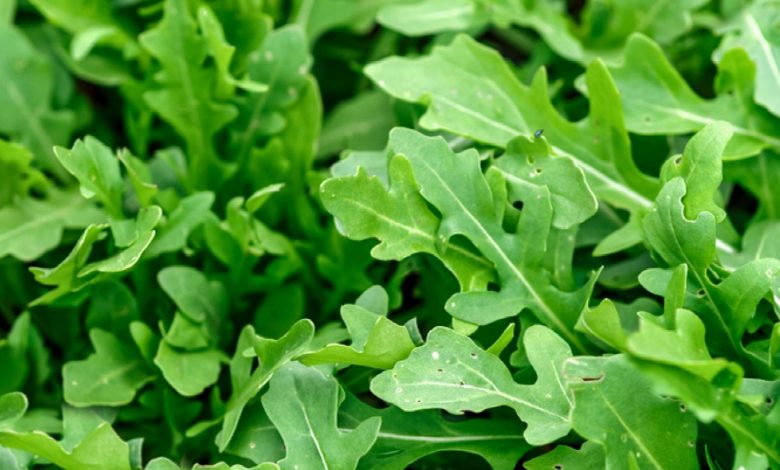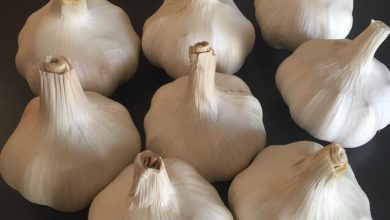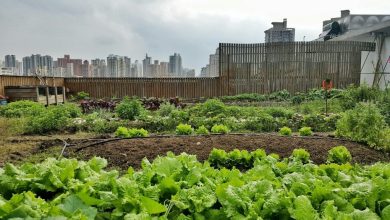How to Plant Arugula: [Cultivation, Water, Fertilizer, Care and More]

Plant Arugula Step by Step:
- When? Throughout the year.

- Where? Place where it receives sunlight. Although it can have shaded hours of the day.
- How do we want the ground? Well stirred and can drain easily.
- How do we pay? The substrate with highly decomposed organic matter and humus.
- How do we sow? First with seed in a pot, when the stems reach about 5cm, we transplant them to the ground and every 20cm between plants.
- How do we water? With drip, ideal.
- How often do we water? In summer, daily. At other times of the year we can space depending on the rains up to once a week.
- When is it harvested? 5 weeks after sowing.
- What diseases and pests does it have? Fungi due to excess moisture (flooding the earth) and fleas.
- What do we plant nearby? Tomatoes, aubergines and peppers.
- What do we NOT plant nearby? Cabbages, turnips and radishes.
Arugulas are a type of leafy vegetable that is very common in Italian cuisine. In fact, already in the days of the Roman Empire we can find indications that arugula was widely consumed.
Despite having a good nutritional value, it does not reach the levels of its relatives, spinach or chard. They are generally eaten raw, as an accompaniment to a salad. Although they can also be made in the pan.
Arugula stands out for having many bioflavonoids and glucosinolates. This makes them have a spicy flavor and are anticancer.
Therefore, within the properties of arugula, we can highlight:
- vitamin a, c

- Folic acid.
- Pantothenic acid (great for people with anemia).
- Iron, calcium, copper, zinc, manganese and potassium.
- They prevent fluid retention.
- excellent diuretics.
When and where do we plant arugula?
Arugula can be sown throughout the year. Their cultivation is comfortable because they support very low temperatures.
They need sunlight, but not too much. We will look for a place where it receives enough sun during the day, although not like other crops that need as much sunlight as possible, such as tomatoes.
Arugulas turn ugly if they get too much sunlight. Its leaves turn yellowish and its taste becomes bitter. Still, if you’re able to eat them in this state, you’re in luck; this is when they are most nutritious.
How do we prepare the soil?
As always, we will till the soil with a motorized tiller (if possible). It would be ideal to use a soil where we have previously planted other crops.
They like calcareous soils and well-drained soil.
How do we pay the arugula?
 We do not need much substrate for this leafy vegetable. However, adding something to the soil will lead to larger and more flavorful leaves.
We do not need much substrate for this leafy vegetable. However, adding something to the soil will lead to larger and more flavorful leaves.
We want highly decomposed organic matter and deposited fertilizer and wait a number of days for the soil to absorb the nutrients we have provided.
How do we water them?
Rockets are plants that need a lot of water. We have to watch especially in summer that they do not dry out. We will give you a constant level of water during the summer.
The ideal irrigation option is drip irrigation, due to its efficiency and its ability to keep the soil moist without flooding it.
In the other times of the year, such as spring or autumn, the arugula can be maintained with the typical rainfall of that period. However, we will also be aware that several weeks or even months go by and they do not receive water.
How to sow arugula step by step?
 Starting from seeds, we can sow arugula in pots until the stems reach 5cm in height, approximately. Then, we will transplant to the ground with separation distances of about 20cm between the plants.
Starting from seeds, we can sow arugula in pots until the stems reach 5cm in height, approximately. Then, we will transplant to the ground with separation distances of about 20cm between the plants.
- Arugula seeds will germinate in soil temperatures as low as 4°C, so they should be sown outdoors as soon as the soil can be worked in spring. Sow in late summer or early fall for a fall or winter harvest.
- Arugula does best in nutrient-rich, well-drained soil, but tolerates a wide variety of conditions. It prefers slightly acidic soil with a pH between 6 and 7.
- Plant in full sun (6 or more hours of sunlight) for best results. Arugula can also grow in partial sun conditions.
- Avoid planting arugula in areas where its relatives (other Brassicas) have been recently planted, as pests and diseases can persist.
- Plant 2 to 5 centimeters apart in rows 25 centimeters apart. You can also sow the arugula seeds alone or mixed with other salad greens .
- The seeds germinate in about a week (or a little longer in cool soil). Speed up germination by soaking the seeds in water for a few hours before planting.
- Sow new arugula seeds every 2-3 weeks for a continuous harvest later.
- Keep the soil evenly moist; this helps prevent bolting in hot weather.
- Thin the seedlings about 15 centimeters apart, and use the thinning for salads.
- To reduce heat stress and prevent flowering, provide some shade to plantations in the hottest months.
When can we harvest them?
We will look at the size of the sheets. When they reach 6-8cm, we can start harvesting the arugula.
In the event that we cut the largest stems, in hot climates the plant will rebound in its growth and we can repeat the process up to 5 more times.
What diseases and pests do rockets have?
In spite of being very resistant plants, the excess of humidity affects arugula a lot due to the fungi. Leaves closest to the ground can also be affected by flea beetles.
How do we prevent both problems?
 The first, from excess humidity and fungi, is carried out through adequate drip irrigation. In summer we will give the rockets a constant supply of water. Daily, if possible.
The first, from excess humidity and fungi, is carried out through adequate drip irrigation. In summer we will give the rockets a constant supply of water. Daily, if possible.
However, we do not want to flood the earth. This will cause excess moisture and lead to the appearance of these fungi.
On the other hand, we can avoid fleas by making a dilution of garlic and spraying it over the leaves.
What do we plant nearby?
- Tomatoes.
- Eggplants.
- Peppers.
What don’t we plant nearby?
- Cabbages.
- turnips
- radishes


![Photo of Sowing Broccoli: [Care, Cultivation, Irrigation, Substrate and Pests]](https://www.complete-gardening.com/wp-content/uploads/2022/08/sowing-broccoli-care-cultivation-irrigation-substrate-and-pests-390x220.jpg)

![Photo of Anthurium: [Cultivation, Irrigation, Care, Pests and Diseases]](https://www.complete-gardening.com/wp-content/uploads/2022/08/anthurium-cultivation-irrigation-care-pests-and-diseases-390x220.jpg)